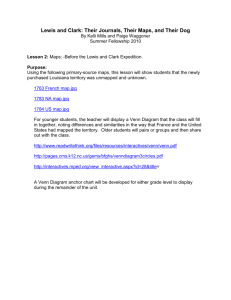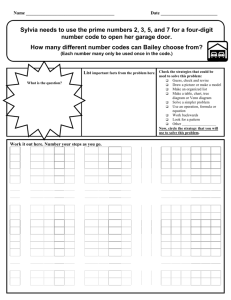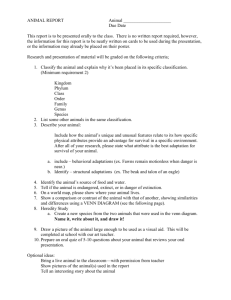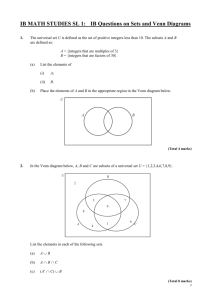HutchinsonOursT.doc - Arizona Geographic Alliance
advertisement
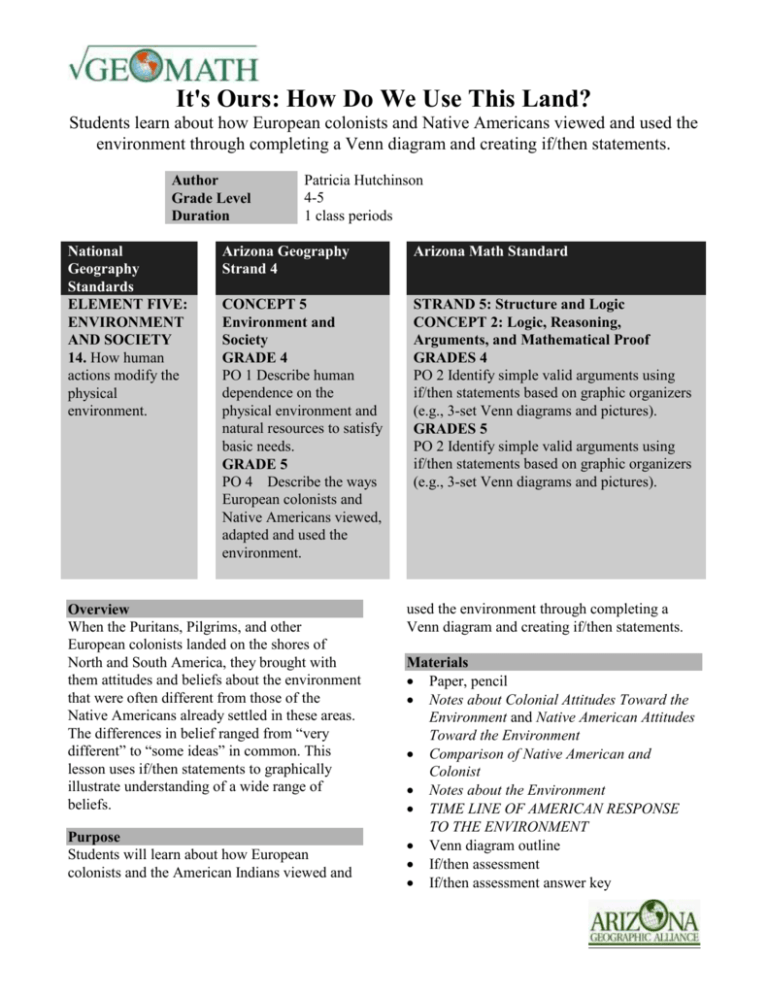
It's Ours: How Do We Use This Land? Students learn about how European colonists and Native Americans viewed and used the environment through completing a Venn diagram and creating if/then statements. Author Grade Level Duration National Geography Standards ELEMENT FIVE: ENVIRONMENT AND SOCIETY 14. How human actions modify the physical environment. Patricia Hutchinson 4-5 1 class periods Arizona Geography Strand 4 Arizona Math Standard CONCEPT 5 Environment and Society GRADE 4 PO 1 Describe human dependence on the physical environment and natural resources to satisfy basic needs. GRADE 5 PO 4 Describe the ways European colonists and Native Americans viewed, adapted and used the environment. STRAND 5: Structure and Logic CONCEPT 2: Logic, Reasoning, Arguments, and Mathematical Proof GRADES 4 PO 2 Identify simple valid arguments using if/then statements based on graphic organizers (e.g., 3-set Venn diagrams and pictures). GRADES 5 PO 2 Identify simple valid arguments using if/then statements based on graphic organizers (e.g., 3-set Venn diagrams and pictures). Overview When the Puritans, Pilgrims, and other European colonists landed on the shores of North and South America, they brought with them attitudes and beliefs about the environment that were often different from those of the Native Americans already settled in these areas. The differences in belief ranged from “very different” to “some ideas” in common. This lesson uses if/then statements to graphically illustrate understanding of a wide range of beliefs. Purpose Students will learn about how European colonists and the American Indians viewed and used the environment through completing a Venn diagram and creating if/then statements. Materials Paper, pencil Notes about Colonial Attitudes Toward the Environment and Native American Attitudes Toward the Environment Comparison of Native American and Colonist Notes about the Environment TIME LINE OF AMERICAN RESPONSE TO THE ENVIRONMENT Venn diagram outline If/then assessment If/then assessment answer key It’s Ours: How Do We Use This Land Objectives The student will be able to: 1. Recognize the similarities and differences between colonial beliefs and Native American attitudes toward the environment. 2. Accurately complete a Venn diagram that visually organizes what is different and what is similar between these sets of environmental beliefs. 3. Accurately complete several if/then statements. Procedures Students should have experience in creating Venn diagrams prior to this lesson. 1. Read aloud or have the students read- the selection on the environment. An alternate approach is to use the separate beliefs sheets – Native American and Colonial farmers. Teacher may choose to divide the students into two groups with each group reading only one of the selections. 2. Students should record on a piece of notebook paper the similarities or differences in beliefs about the environment as they are read. The student should then use these notes to create a Venn diagram. The left circle will indicate beliefs that were only held by Native Americans. The right circle will indicate attitudes that were only held by Colonists. The intersection of the two circles will indicate common beliefs between the two groups. 3. Students can check their work by doing a group Venn diagram. Students can then practice creating some if/then statements. Assessment A quiz is provided which assesses students’ understanding of the differences between how colonists and Native Americans used the environment. Mastery of the geography concept is considered answering both multiple-choice questions correctly. The math concepts will be assessed through grading the individual Venn diagrams. At the bottom of the quiz paper, the students can write 2 more if/then statements. These statements do not need to link to Native Americans and colonists, but should be accurate statements. Assign the Venn diagram 11 points for correct beliefs in the right circle areas. The if/then statements can be given 2 points each. Total for the math assessment is 15 points with 12 being considered mastery. Extensions Using the Timeline of American Environmentalism, students can create a timeline showing the growth of American appreciation of the environment. Ask students to locate and identify their birth year and place other important dates on this timeline. Another lesson that focuses on how colonists and Native Americans used the environment differently is found on the GeoLiteracy CD Rom produced by the Arizona Geographic Alliance. This lesson called, “A River Dead or Alive” was written by Jane Chambers and features the book A River Runs Wild by Lynn Cherry. For information on how to purchase the GeoLiteracy CD please contact the Arizona Geographic Alliance at 480-965-5361 or see the website at http://alliance.la.asu.edu/azga/ Sources www.indians.org/library/intro.html Essay, “Native American Environmental Issues” by David R. Lewis. This essay is taken from Native America in the Twentieth Century: An Encyclopedia, edited by Mary B. Davis and It’s Ours: How Do We Use This Land published in 1994 by Garland Publishers of New York (greatly condensed and simplified). www.ac.wwu.edu/~gmyers/per.Amer.env.html. Periods and Events in the Emergence of American Environmentalism water.usgs.gov/nwsum/WSP2425/history.html. History of Wetlands on the Conterminous United States external.oneonta.edu/cooper/articles/nyhistory/1 995nyhistory-taylor.html “The Great Change Begins: Settling the Forest of Central New York Alan Taylor” (University of California at Davis) Published in New York History, Vol. LXXV, No. 3 (July 1995), pp. 265-290. ©1995, New York State Historical Association, and placed on-line with its kind permission. (May be downloaded and reproduced for personal or instructional use, or by libraries.)



